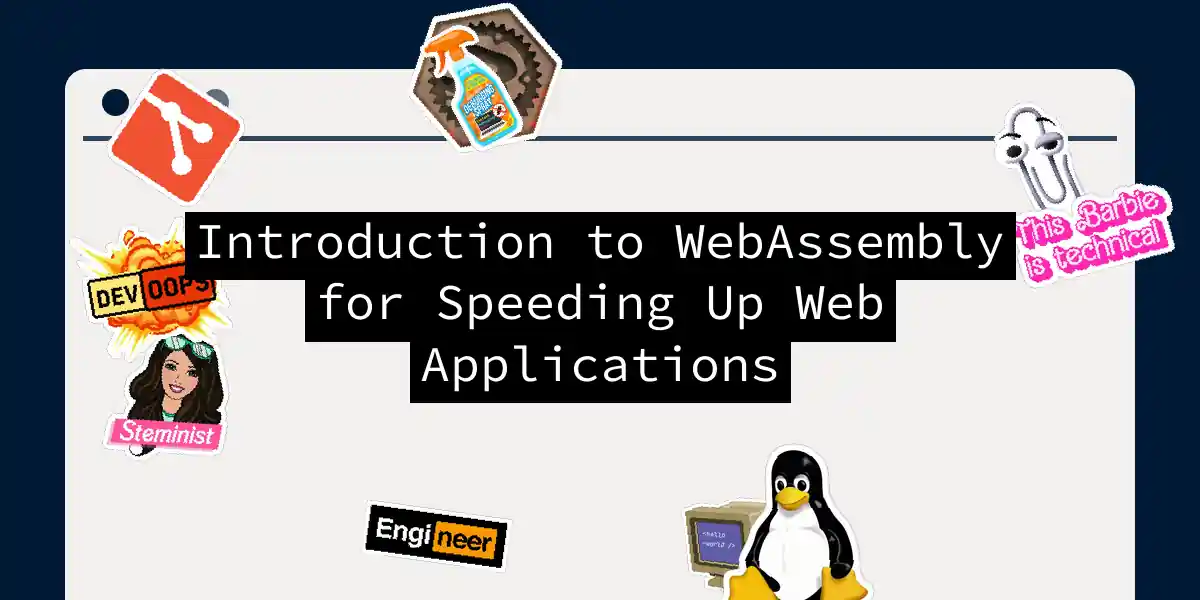What is WebAssembly?
In the ever-evolving landscape of web development, WebAssembly (Wasm) has emerged as a game-changer, allowing developers to run complex applications directly in the browser with near-native performance. But what exactly is WebAssembly, and how does it achieve this magic?
WebAssembly is a binary instruction format that serves as a portable compilation target for high-level languages. Unlike JavaScript, which is a high-level, interpreted language, WebAssembly is designed as a low-level language that can be executed efficiently by modern web browsers. This means you can write code in languages like C++, Rust, or Go, compile it to WebAssembly, and run it in any modern browser without worrying about the underlying platform.
The Role of WebAssembly in Modern Web Development
Performance Boost
One of the primary benefits of WebAssembly is its ability to significantly speed up code execution compared to JavaScript. This is particularly crucial for complex computational tasks such as video processing, graphics rendering, and 3D modeling. WebAssembly enables developers to use more complex algorithms and handle large data sets without a significant drop in performance.
Cross-Platform Compatibility
WebAssembly provides a unified standard for executing code across different platforms. This means developers can write code in various programming languages, compile it to WebAssembly, and run it on any modern web browser. This simplifies code portability between web applications and native applications.
Integration with JavaScript
WebAssembly does not replace JavaScript but complements it. Developers can use WebAssembly for high-performance tasks and interact with it through JavaScript. This integration provides flexibility in development, allowing developers to leverage the best aspects of both technologies.
Supporting Complex Applications
WebAssembly enables the execution of complex applications directly in the browser, such as games, graphics editors, and CAD systems. This opens up new possibilities for creating powerful web applications that were previously only feasible in native applications.
How to Use WebAssembly
Step-by-Step Guide
Here’s a step-by-step guide to getting started with WebAssembly:
- Choose Your Language: Select a language you are comfortable with, such as C++, Rust, or Go.
- Compile to WebAssembly: Use a compiler like Emscripten to compile your code into WebAssembly.
- Load the WebAssembly Module: Use JavaScript to load and instantiate the WebAssembly module in the browser.
- Interact with WebAssembly: Call functions from the WebAssembly module and handle the results in your JavaScript code.
Here’s an example of how you might load and use a WebAssembly module in JavaScript:
// Load the WebAssembly module
WebAssembly.instantiateStreaming(fetch('game-engine.wasm'), {})
.then(result => {
// Use the exported functions from the WebAssembly module
result.instance.exports.startGame();
})
.catch(console.error);
Example: Creating a High-Performance Game
Imagine you are developing an online game that requires complex physics and graphics rendering. Here’s how you can use WebAssembly to enhance performance:
- Write Critical Code in C++: Write the physics engine or graphics rendering code in C++.
- Compile to WebAssembly: Use Emscripten to compile the C++ code into WebAssembly.
- Load and Use in Browser: Load the WebAssembly module in your JavaScript code and call the necessary functions to run the game.
Future of WebAssembly
WebAssembly is continuously evolving, with new features and improvements being added with each update. Here are some exciting developments on the horizon:
- Multi-Threading and Parallelism: Improved support for multi-threading and parallelism will significantly boost performance and expand the use cases for WebAssembly.
- Native Calls and System Resources: Future updates will include better support for native calls and interaction with low-level system resources, enhancing the capabilities of WebAssembly.
- Integration with Advanced Technologies: WebAssembly is expected to be integrated with technologies like blockchain, artificial intelligence, and IoT, opening new avenues for secure and high-performance applications.
Conclusion
WebAssembly is not just a tool; it’s a revolution in web development. By providing near-native performance, cross-platform compatibility, and seamless integration with JavaScript, WebAssembly empowers developers to create complex, high-performance web applications that were previously unimaginable.
As you embark on your WebAssembly journey, remember that it’s not about replacing JavaScript but about leveraging the strengths of both technologies to create something truly remarkable. So, go ahead and give WebAssembly a spin – your web applications (and your users) will thank you
